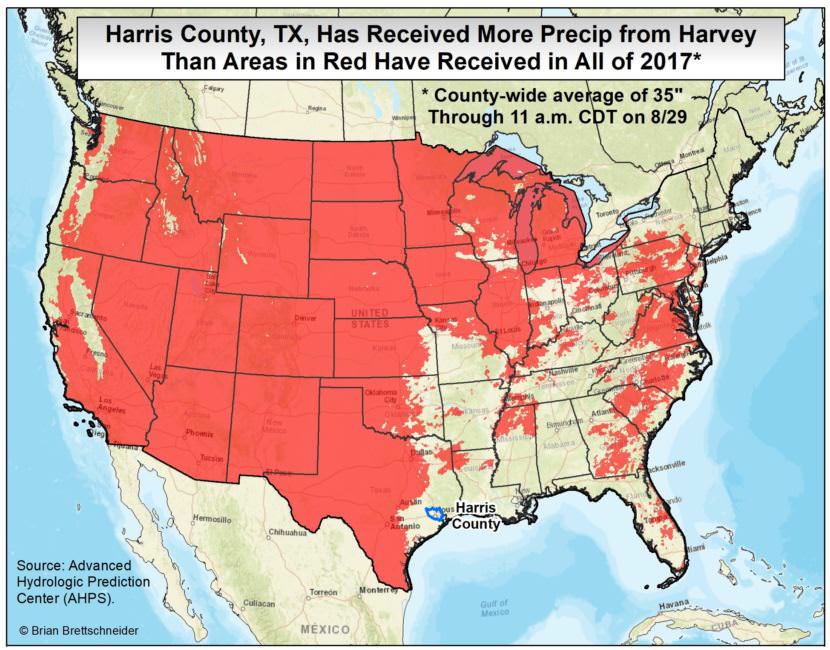
Lots of Alaskans have ties to the Houston area. Including climate expert Brian Brettschneider from our Ask a Climatologist segment.
We asked him to help us understand the magnitude of the rainfall event from tropical storm Harvey and to clarify how much climate change may be contributing to the disaster.
Brettschneider says he was living in Houston in 2001, when tropical storm Allison dumped 15 – 35 inches of rain on the city in five days.
Interview Transcript:
Brian: My own home flooded and I saw a home next door burn down from a fire started by the flood, so it is eerie to watch what’s going on [now] and actually how much worse it is than any previous flood on record.
Annie: Given how much worse it is than the flood you lived through, is it hard to comprehend?
Brian: It is. You can go through the statistics which are mind boggling. The entire area where Houston is in Harris County has experienced the rainfall that would happen about once every 1000 years or more, for a large area. Sometimes you would see a little dot on the map where there’s a small bull’s eye of somewhere that got really, really dumped on with rain. But this is a large area. You’re talking 2,000 square miles that have had a 1,000 year flood event. So it’s really unfortunate, the placing of this event. And you also have an area that’s been heavily developed. It’s very flat. It was historically wetland and boggy and so there’s a lot of human conditions that have contributed to the inability of that water to move out of the system.
Annie: Give us some Alaska context for just how much rain has fallen.
Brian: So if you think of the Houston area, some areas have had a year’s worth of rain in four days. Imagine Anchorage getting 17 inches in four days which is twice what has ever fallen in that time period. Imagine Fairbanks getting 10 or 11 inches in a couple days, which would far exceed any flood on record. So these are mind numbing statistics about how much rain has fallen in a short amount of time. And actually if you take all that water that has just fallen on Harris County and you put it right over the urban part of Anchorage it would be about 60 or 70 feet deep of water. So it’s really an extraordinary amount of water that’s fallen.
Annie: How much of this storm can be attributed to climate change?
Brian: That’s actually a really tough question and there’s been a lot of hand wringing about this. It’s pretty standard accepted atmospheric physics that warmer air can hold more water, so you would expect that any given event would provide more precipitation. As far as was this a poster child for a climate change storm? I think that’s a dangerous path to go down. You would really want to look at it as a probability event, as a population of storms. So you would say this is a little more likely in a warming world than it would have been pre-industrial warming. So I wouldn’t say Harvey is the future. But an event like this is just a little more likely than you would have seen in the past.
Annie: And in terms of how much more rain we’re seeing out of Harvey because of climate change, you’re saying that’s a relatively small amount?
Brian: Well again, it’s really hard to attribute. When you say a small amount, perhaps. So maybe instead of some areas getting 50 inches of rain, maybe they would have only had 47, 48 or 49 inches of rain before. But that one, two or three inches of rain — that matters. That’s not nothing. So in the grand scheme of things, that may not sound like a lot but it may be a significant contributor. But to say Harvey is a climate change storm, that’s kind of a stretch at this point.
Annie Feidt is the broadcast managing editor at Alaska Public Media. Reach her at afeidt@alaskapublic.org. Read more about Annie here.





